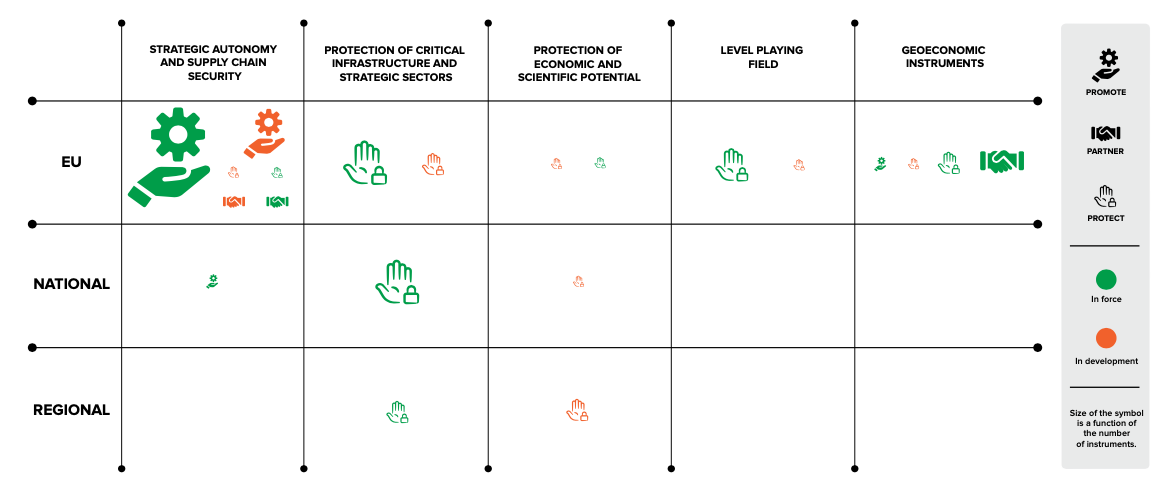Matrix of Geoeconomic Instruments
What is the matrix?
Changing times call for changing policy instruments. Since the EU made 'strategic autonomy' official policy in its 2016 Global Strategy, several instruments have been added to the geoeconomic toolbox. We have compiled an overview of the current and upcoming initiatives to keep track of the geoeconomic policy of the EU, the Belgian federal government and regional governments. In addition to the timeline, the Matrix also links the instruments with the EU Economic Security Strategy and the Belgian National Security Strategy. The Matrix will be updated regularly to reflect the creation of new policy instruments.

Click here to access the Matrix
Why did we develop the matrix?
The goal of the Matrix is to help academics and policy makers keep track of the geoeconomic policy landscape in Belgium and the EU.
In the end of the 20th and the beginning of the 21st century there was general optimism about the peaceful effect of interconnected economic relations. Following the spirit at that time, the EU built its identity around open economic policy. However, during the last 10 years, the EU and its members states have taken protective measures as a response to a more hostile global conditions. Belgium accordingly included economic security in its first national security strategy.
The wide range of new policy initiatives makes it difficult to see which threats are being addressed and which still need more attention. The matrix helps to identify the domains which are being covered by existing and upcoming instruments and likewise helps to see the gaps.
What are some of the takeaways of the matrix?
The Matrix and the research leading up to the matrix have allowed us to make some analytic observations on the Belgian and European geoeconomic policy landscape. An elaborate explanation on these takeaways can be found in our accompanying policy paper.
Click here to access the policy paper
The key takeaways come down to the following points:
- The EU helps overcome fears of losing competitiveness, fears of retaliation, and domestic policy inertia
- The Belgian federal and regional governments mostly focus on the 'protect' dimension
- The EU mostly focuses on the 'promote' dimension
- Belgium is moving towards a more proactive and systemic risk assessment and management
How should you use the Matrix?
The Matrix consists of three parts: a visual representation of the policy instruments, a concise table with an overview of all the instruments, and a complete index of the instruments with a brief description. Readers that are interested in a quick overview can stick to the visual representation and those who are looking for more precise information can scroll down to the table or the index.
The visual representation is a cross-tab where the rows indicate the policy level and the columns indicate the categories of the Belgian National Security Strategy. The symbols identify the promote, protect or partner categories from the EU's Economic Security Strategy. Instruments in green are already in force, whereas those in orange are still under development.
How to cite
Compiling the Matrix of Geoeconomic Instruments was a joint effort of researchers of the Geoeconomics Group. We would therefore appreciate correct reference to the documents, the new information in the documents or the visual representations. We suggest the following reference (authors are in alphabetical order to represent the equal contributions to the final product):
Du Bois, C., Houttekier, N., Van Hoeymissen, S., Vigne, E. (2023). The Matrix of Geoeconomic Instruments. The Geoeconomics Group.